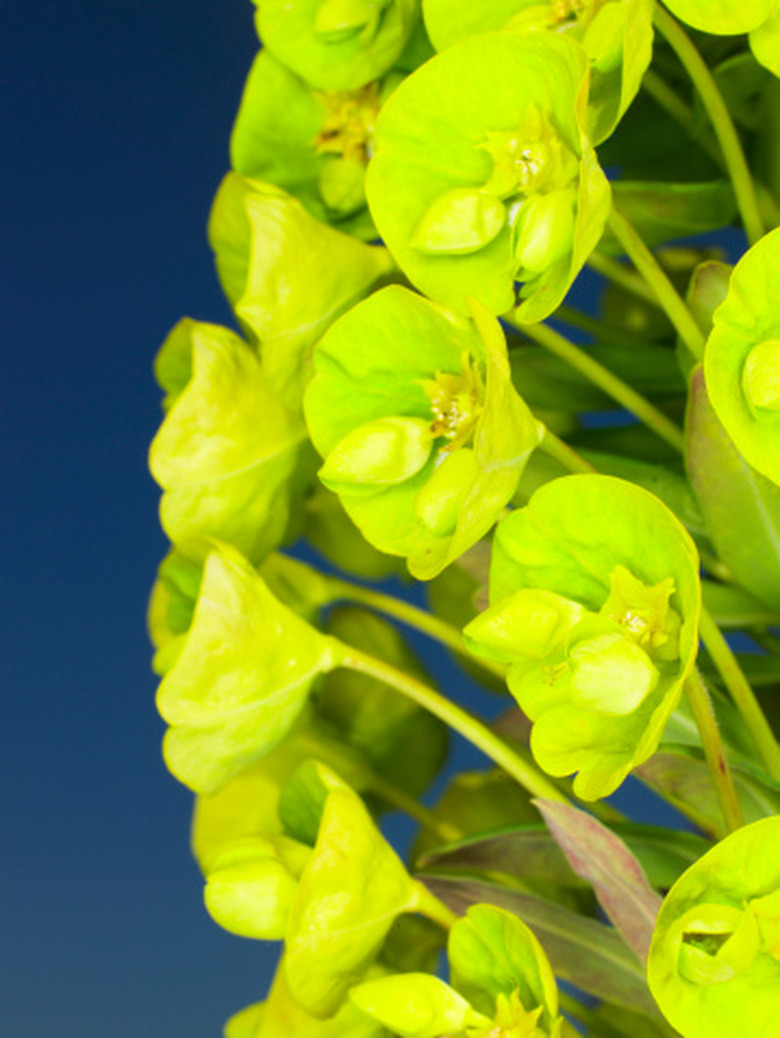How To Prune Euphorbia
The genus euphorbia consists of a vast group of flowers, incorporating about 2,000 different species. Some are weeds and others are annuals, perennials, trees or shrubs; therefore, pruning a euphoria should be based on the type that is growing in your landscape. That said, according to the University of Rhode Island, most garden euphorbias like Euphorbia rigida, can usually be pruned in a similar manner.
Step 1
Prune euphorbia in the summer when it is finished blooming.
Step 2
Choose the stems that have just flowered for pruning. Leave the stems that did not flower, if applicable.
Step 3
Cut the chosen branches, making clean cuts right above a healthy parent branch. Or, clip them back to the base of the plant if they originated from there. This depends on the variety. Repeat yearly.
- The genus euphorbia consists of a vast group of flowers, incorporating about 2,000 different species.
- Some are weeds and others are annuals, perennials, trees or shrubs; therefore, pruning a euphoria should be based on the type that is growing in your landscape.
Trim Euphorbia?
In early spring, trim away any winter damage. Most euphorbia species bloom only at the tips of stems that grew the year before. Trimming back euphorbia stems to their base immediately following bloom throughout the spring and summer makes for a plant that doesn't get overcrowded and flowers consistently. This results in shorter stems that can better support flowers. Varieties that develop woody bases and produce new growth from those hardier stems can get large and untidy if they go too long without attention. Mediterranean spurge, which can grow 3 to 4 feet tall and wide, can be cut back to the woody framework of stems or the ground every year after they bloom. One characteristic that all euphorbia share is a white, milky sap that causes an itchy rash and possible blistering on contact. The plant is also toxic if eaten. Gloves and protective clothing are recommended when you trim any euphorbia.
- In early spring, trim away any winter damage.
- Mediterranean spurge, which can grow 3 to 4 feet tall and wide, can be cut back to the woody framework of stems or the ground every year after they bloom.
References
- University of Arizona Pima County Cooperative Extension: Euphorbia Rigida
- Washington State University; Euphorbia; October 2006
- University of California Extension Sonoma County Master Gardeners: Euphorbia
- Washington State University Clark County Extension: Pacific Northwest Plants — Mediterranean Spurge
- Perennials.com: Euphorbia Myrsinites
- Fine Gardening: Euphorbia Polychroma (Cushion Spurge)
- Pruning Plant by Plant; DK Publishing
- The Well-Tended Perennial Garden; Tracy DiSabato-Aust
- The Complete Book of Pruning; Peter Blackburn-Maze, et al.
- University of California Extension Marin County Master Gardeners: Euphoric Over Euphorbias
